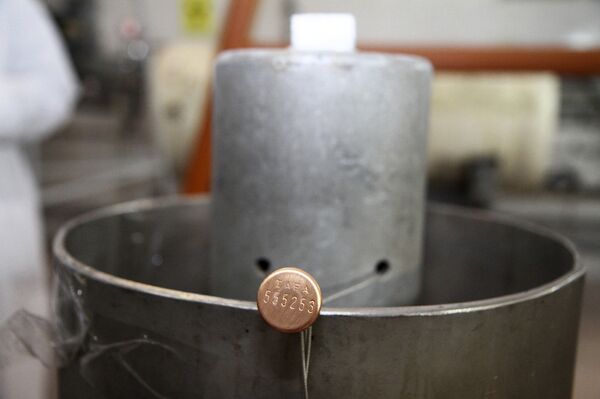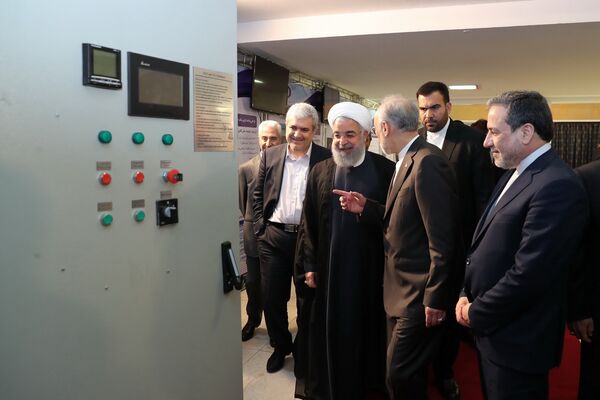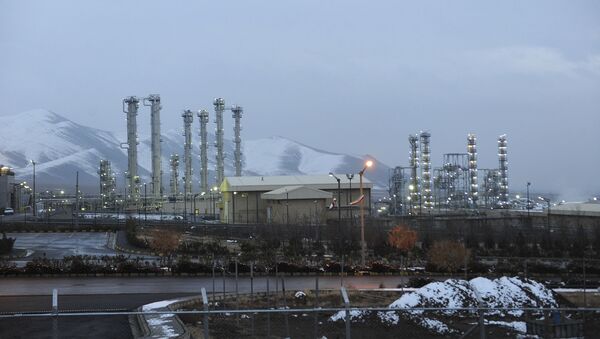A confidential report from the International Atomic Energy Agency distributed to member countries says that Tehran has persisted in increasing its stockpiles of enriched uranium and is in violation of its deal with world powers, reports the Associated Press.
The findings, presented by the United Nations’ atomic watchdog on Friday, claim that as of 20 May, Iran’s total stockpile of low-enriched uranium amounted to 1,571.6 kilograms (1.73 US tons), up from 1,020.9 kilograms (1.1 US tons) registered on 19 February.

According to the report, Iran has also been continuing to enrich uranium to a purity of up to 4.5 percent, which is above the Joint Comprehensive Plan of Action (JCPOA) designated 3.67 percent.
Tehran is also claimed to be above the deal’s limitations on heavy water.
JCPOA Commitments
The Joint Comprehensive Plan of Action (JCPOA) deal, also known as the Iran nuclear deal, was signed by Tehran in 2015 with the United States, Germany, France, Britain, China and Russia, allowing the Islamic Republic to retain a stockpile of 202.8 kilograms (447 pounds).
The nuclear deal offered Iran economic incentives in return for curbs on its nuclear programme.
However, citing Israeli intelligence allegations that Tehran had violated the deal, US President Donald Trump unilaterally scrapped the deal in 2018.
In the wake of that move, Washington has launched a so-called maximum pressure campaign against Tehran, slapping sanctions on the country.
Tehran responded to the sanctions and the failure of JCPOA signatories – specifically Britain, France and Germany – to protect the deal by gradually suspending its own commitments to the nuclear accord. Nonetheless, Iran repeatedly announced its readiness to resume fulfilling its commitments if sanctions were removed.
Tehran has also been insisting it has no goal of producing a nuclear bomb, and its atomic program is exclusively peaceful in nature, aimed at producing energy.

According to the Washington-based Arms Control Association, cited by AP, to produce a nuclear bomb Iran would require approximately 1,050 kilograms (1.16 US tons) of low-enriched uranium under 5 percent purity, which would have to be further enriched to weapons-grade, or more than 90 percent purity.
In 2013, Iran’s stockpile of enriched uranium was already more than 7,000 kilograms (7.72 US tons) with higher enrichment, says the outlet. Prior to penning the nuclear deal Iran enriched its uranium up to 20 percent purity.
With the JCPOA in place, the period that Tehran would require to produce a nuclear bomb was suggested as around a year, according to expert analysis cited by the outlet, with that “window” narrowing as the Islamic Republic has been stepping away from the limits of the 2015 agreement.
While it remains in violation of the main restrictions contained in the JCPOA deal, Iran has continued to allow inspectors for the UN atomic agency access to facilities to monitor their operations.
While the IAEA has reported that it maintains its monitoring activities in the country, predominantly via chartering aircraft to fly inspectors to the Islamic Republic, the agency raised concerns over access to two of three locations identified in March as facilities possibly used by Tehran for nuclear-related activities without declaring them to international observers.
As the IAEA report suggests that activities at all three sites date to the early 2000s, it believes “extensive sanitisation and levelling” were conducted at one site in 2003 and 2004, suggesting there would be no verification value in inspecting it.

However, the report says that for over four months, Iran has denied access to the other two locations.
One of these was said to have been partially demolished in 2004, with the other facility, according to the agency, upwards from July 2019 displaying activity “consistent with efforts to sanitise” it.
The nuclear watchdog concluded that for almost a year Tehran has “not engaged in any substantive discussions” in response to IAEA questions about possible undeclared nuclear material and activities.


